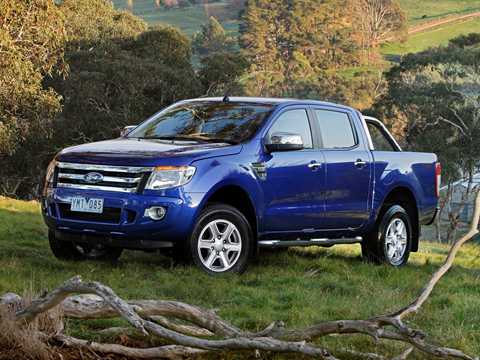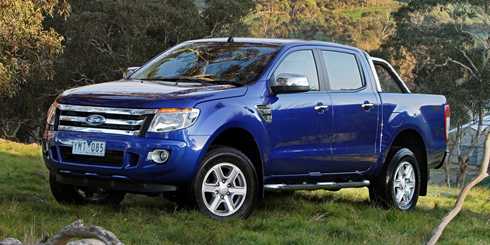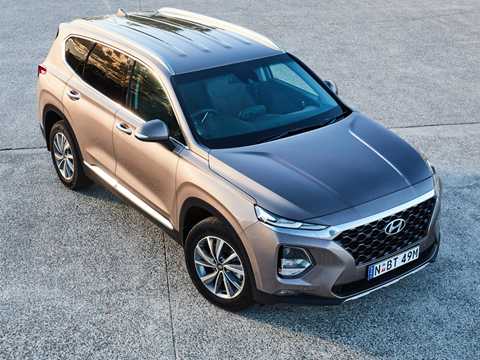Here’s some advice for those who are ‘too cool’ for seven-seat SUVs and choose to criticize them. Head out to the ‘Mortgage Belt’ at school pick-up times and then nominate a better alternative for those families with cars like the Holden Captiva 7.
We know because we’re in the mix - we’ve got children. And it’s not just ones with your surname, it seems every day of the week there are extras requiring lifts somewhere and sporting equipment needing toting to some far-flung oval.
Enter the Holden Captiva 7 (and others like it). They have seats, they have room, they can handle some rough & tumble and, in the case of the Captiva 7 LX V6 we tested, a pleasing growl from the exhaust and responsiveness which dad appreciates.
Holden Captiva 7 What Overview
Car Showroom tested the range-topping petrol-powered Holden Captiva 7 – the 3.0 LX AWD (all-wheel-drive). Priced at $42,490, our Captiva of course enjoyed the power of Holden’s 3.0-litre V6 SIDI engine.
Most recently Holden introduced some technical changes for the Captiva 7 which wrought fuel consumption improvements and facilitated re-fuelling with E85 bio-ethanol fuel. In addition, heated front seats and front park assist joined the list of standard features.
We’ve always liked the Captiva for its smart styling, good package size and value-for-money. In fact several of our friends own Captiva 7s and love them – can’t get a more honest recommendation than that.
Holden Captiva 7 Engine
Holden’s fantastic SIDI 3.0-litre V6 petrol engine (as used in the Commodore) is as well-known as Weet-Bix and Vegemite. For the Captiva 7 application, output is virtually identical to the Commodore – 190kW/288Nm.
Of course the big news in recent months has been the re-calibration for E85 bio-ethanol – a cleaner burning fuel which can reduce exhaust C02 emissions by as much as 40 per-cent.
As a result, combined cycle fuel consumption for the Holden Captiva 7 3.0 LX AWD as tested has been slashed from 11.3l/100kms to 10.1l/100kms.
Drive is to all four wheels via a six-speed automatic transmission.
Holden Captiva 7 The Interior
Range-topping Holden Captiva LX highlights its ‘luxo’ treatment right off the bat with nicely-finished leather seats. There’s a nice driving position in Holden Captiva, but the steering wheel felt unusually large to us.
Again we were reminded about the nice-looking, simple, easy-to-read instrumentation which adds to the Captiva 7’s user-friendliness. To the left (in LX grade) is the seven-inch multi-function touchscreen which includes the satellite navigation and reversing camera displays.
Holden Captiva runs an electronic park brake which frees-up the centre console for more storage.
Both the second and third-row seats fold flush when not in use to maximize storage space. When in use, those in the third row need a bit of agility for access, but the Car Showroom Juniors were very happy. Unusually, even when fully occupied, Holden Captiva 7 does provide reasonable luggage space.
Holden Captiva 7 Exterior & Styling
We’ve always thought the Holden Captiva and Kia Sorento were the standout lookers in this sub-segment and now the just-launched, all-new Hyundai Santa Fe has now joined that esteemed list. But for sure, the Series II update introduced some extra athleticism/style to the Captiva package.
That comes in the form of a new front-end with a re-styled grille (Holden calls it ‘twin-portal’), more prominent fog-lights, and larger headlights which, in the modern way, sweep back onto the front quarter panels.
The bonnet too gets a fresh look with extra creases to build the athletic look, turn-signals have swapped to the exterior mirrors and there are new clear-lense tail-lights.
Our LX model Holden Captiva sat on good-looking 19-inch alloy wheels.
Holden Captiva 7 On The Road
In developing the Captiva Series II, Holden didn’t just give it a new badge. Underneath the suspension and steering were re-tuned for better refinement and a tad more precision. Captiva 5 diesel and all Captiva 7 models gained a hydraulic self-leveling system.
And gee we love Holden’s V6. The SIDI version fitted to our Captiva 7 delivered torque by the bucket load, the instantaneous throttle response we expect from Holden and felt like it could tow Tasmania back to the mainland – in fact the towing capacity grew to 2000kgs at the most recent model update.
So, all things considered our V6 Holden Captiva LX was very pleasant over our high-speed mountain roads test route. Sure it’s no HSV GTS, and we would have liked less abrupt intervention from the ESC when cornering, but for a seven-seat family SUV, Holden has the Captiva 7 very nicely set-up.
Around town, we appreciated Holden Captiva’s newly-added hill-start-assist system when stuck in a traffic jam getting up to our tight CBD car park. Once we found a spot, the standard reversing camera certainly helped, but what felt like too many turns lock-to-lock in the steering didn’t.
Holden Captiva 7 Challenges
Overall the Holden Captiva impressed again. We remain curious about the steering wheel which did seem oddly large and we were similarly perplexed by the cruise control system which seemed to be slow in starting-up.
Holden Captiva 7 Verdict
Within Car Showroom’s circle of friends are three families with Holden Captiva 7s (one has just updated to the new model). Their report cards are unblemished in every department.
We’ve driven turbo-diesel, four-cylinder petrol and now V6 petrol Captivas in a variety of conditions and they’ve all come up trumps – including one which survived a serious earthquake, epicentered in Korumburra, just a few kilometers from where we were at the time in Inverloch…and that’s not something you encounter in every road test!
We certainly like the extra style the Series II facelift brought and without doubt the 3.0-litre V6 makes the Captiva a smooth, responsive operator (not that the 400Nm on-tap from the turbo-diesel model should be overlooked). And of course, comfort inside remains a Captiva strong-point.
Now there’s talk of an all-new Holden SUV based on the just-launched Colorado ute platform. How that will compare in size to the Captiva and whether it will be in addition-to or replace the Captiva we’re not sure. But if Holden does decide the newcomer will be a Captiva replacement, it will have to be damn good to improve on this even-seater.
Holden Captiva 7 The Competition
Buyers in this league should consider how often they’ll be using seven seats because some of the big-guns are exclusively five-seaters.
Turning to the bigger issue - any time you compare Holden and Ford models, you need to do a detailed check of specifications to ensure it’s apples v apples. Of course the Ford Territory is marginally larger than the Holden Captiva 7, the Territory is made in Melbourne and the Captiva comes from Korea. At $42,490 our V6-powered LX Captiva 7 was very well-equipped and probably compares with the higher-grade Territory models making it great value.
Hyundai’s brand-new Santa Fe is a beauty – one of the best SUVs we’ve driven this year. The Santa Fe looks sharp inside and out and is sharply priced.
Likewise the Kia Sportage is a Car Showroom favourite in this sub-segment. Currently priced from $39,990, Kia Sportage is about to receive a major upgrade which will make it even more appealing.
And of course if seven seats are your requirement, but SUVs aren’t your caper, it’s hard to overlook the Mazda CX-9. The large Mazda gets pricey but 2WD models start at $44,425.































